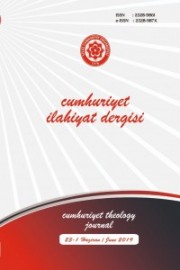Bağımsızlık Sonrası Kırgızistan’da Yaygın Din Eğitimi Faaliyetleri ve Camiler
Common Religious Education Activities and Mosques in Kyrgyzstan after Independency
Author(s): Bakıt Murzaraimov, Mustafa KöylüSubject(s): Education, Islam studies, Politics and religion, Present Times (2010 - today)
Published by: Cumhuriyet Üniversitesi İlahyat Fakültesi
Keywords: Religious Education; Kyrgyzstan; Mosque; Mullah; Muftiyat; Madrasa;
Summary/Abstract: Kyrgyz people lived under the control of Soviet Union for about 70 years. During this time, they were forbidden to practice any kinds of religious duties. Their religious schools and mosques were closed or used for other aims rather than religious needs. In short, all kinds of religious freedom and practices were forbidden strictly. The aim was to bring up an atheistic people during the days of Soviet Union. However, when Kyrgyz people won their independence and established a new country, all kinds of restrictions in terms of religion were abrogated and people began to establish their religious schools and mosques. While during the first years of independency of the country in 1991, there were only 39 mosques, as of 2018 there are nearly 3,000 mosques in the country. In addition to the increase of mosques, the number of people going to mosques also increases day by day. This article examines mainly the development of religious freedom in terms of legal aspect from the beginning of the establishment of the country to our time; the legal statues, functions, and duties of State Commission for Religious Affairs and Religious Office of Kyrgyzstan Muslims, and as common religious educational places mosques, religious activities done at mosques, the factors effecting these activities negatively.
Journal: Cumhuriyet İlahiyat Dergisi
- Issue Year: 23/2019
- Issue No: 1
- Page Range: 193-211
- Page Count: 19
- Language: Turkish

